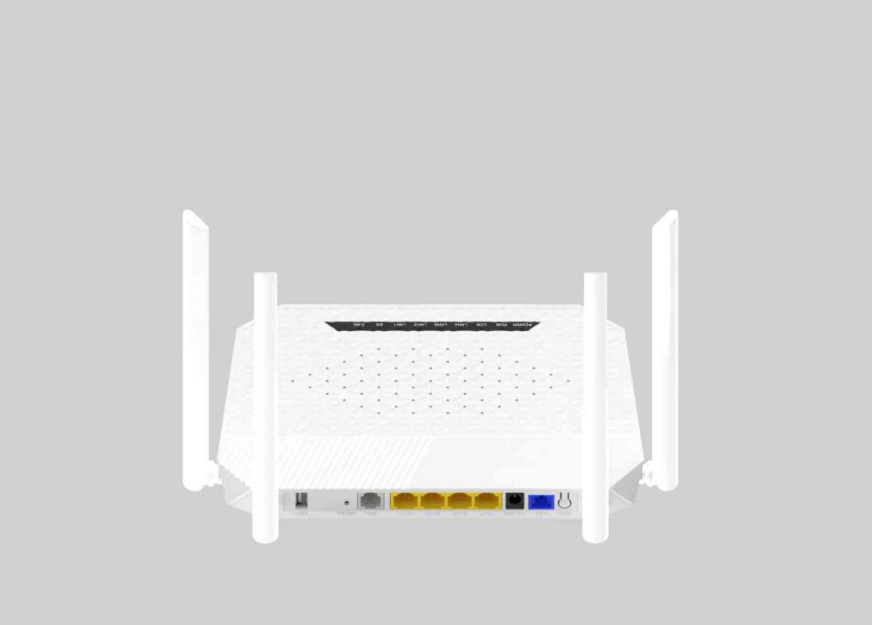HCP dynamic host allocation protocol is widely used in daily Internet access, such as the home Internet router is a DHCP server. When we set the client to automatically obtain the IP address, the DHCP server assigns the IP address to the client according to the DHCP protocol. ONU can also be used as DHCP servers.
The DHCP protocol automatically allocates IP packets of four main types:
DHCP Discover: Send out by the client to discover the DHCP server.
DHCP Offer: Send by the DHCP server, tells the client that I can provide the IP address.
DHCP Request: Send by the client tells the corresponding DHCP server that I need the IP address.
DHCP ACK: Issued by the DHCP server to provide the IP address of the client response.
DHCP Release: Generally, the client is shut down or offline. This message will cause the DHCP server to release the IP address of the client that sends this message.
DHCP Inform: A message sent by the client that requests some information from the server.
DHCP Decline: When the client finds that the IP address assigned by the server is not available (such as IP address conflicts), this message is issued informing the server against the use of the IP address.
During DHCP communication, UDP is used as the transmission protocol. The host sends a request to the DHCP server port 67 and the server replies the message to the host port 68.
1. The discovery phase, where a DHCP client looks for a DHCP server (DHCPdiscover)
The DHCP client sends the DHCPdiscover discovery information to find the DHCP server in broadcast mode (because the IP address of the DHCP server is unknown to the client), that is, specific broadcast information to the address 255.255.255.255. Every host on the network with TCP/IP protocol will receive this broadcast message, but only the DHCP server will respond.
2.Provision phase, where the DHCP server provides the IP address (DHCPoffer)
Each DHCP server in the network that receives a DHCPdiscover discovery responds by selecting one of the IP addresses not yet leased to the DHCP client and sending a DHCPoffer offering containing the leased IP address and other Settings to the DHCP client.
3. The selection phase, in which a DHCP client selects an IP address provided by a DHCP server (DHCPrequest)
If there are more than one DHCP server providing information to the DHCPoffer sent by the DHCP client, the DHCP client only accepts the first DHCPoffer offering information received, and then it answers a DHCPrequest request information in broadcast mode. This information contains a request for the IP address of the DHCP server of its choice. The reason to answer in broadcast mode is to inform all DHCP servers that he will choose the IP address provided by a DHCP server.
4. The confirmation phase, in which the DHCP server confirms the provided IP address (DHCPack)
When the DHCP server receives the DHCPrequest request information answered by the DHCP client, it sends a DHCPack acknowledgment message to the DHCP client with the IP address it provided and other Settings to tell the DHCP client that it can use the IP address it provided. The DHCP client then binds its TCP/IP protocol to the network card, and all the DHCP servers, except the one chosen by the DHCP client, take back the provided IP address.
5. Re-login (DHCPrequest)
In the future, each time the DHCP client logs on the network again, it does not need to send the DHCPdiscover discovery information again, but directly sends the DHCPrequest request information containing the previously assigned IP address. When the DHCP server receives this information, it tries to let the DHCP client continue to use the original IP address and answers with a DHCPack acknowledgment. If the IP address can no longer be assigned to the original DHCP client (if the IP address has already been assigned to another DHCP client), the DHCP server replies a DHCPnack denial message to the DHCP client. When the original DHCP client receives this DHCPnack denial message, it must resend the DHCPdiscover discovery message to request a new IP address.
6. Update the lease
The IP address leased by DHCP server to DHCP client usually has a lease term, after which the DHCP server will take back the leased IP address. If a DHCP client wants to extend its IP lease, it must renew its IP lease. The DHCP client automatically sends information to the DHCP server to update its IP lease both when the DHCP client is started and when the IP lease is half over.
DHCP dynamic host allocation also belongs to one of our ONU series network products, and our related network hot products cover various types of ONU series products, including AC ONU/ communication ONU/ intelligent ONU/ box ONU/ dual PON port ONU and so on. The above ONU series products can be used for the network requirements of various scenarios.Welcome to have a more detailed technical understanding of the products.






